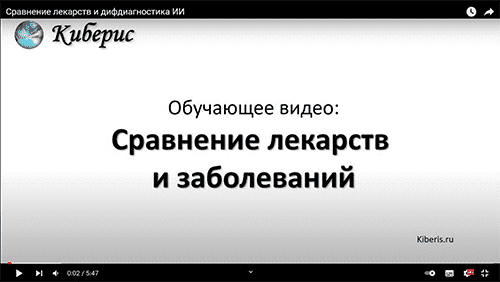Distinctive symptoms
Register , to see more distinctive signs of diseases and studies100% —
Register , to see more distinctive signs of diseases and studies30% 100%
muscular dystonia
66%
—
occlusive hydrocephalus —
20%
hypoxia
64%
9%
headache pressing on the eyes —
13%
meat severe ataxia
49%
—
a cyst of the brain in a child —
13%
organic brain damage
59%
9%
intracranial hypertension in children —
12%
up circulatory disorders
57%
7%
resorption —
11%
bradycardia
46%
—
arterial hypertension in children —
10%
discirculatory encephalopathy
45%
—
meningitis in children —
10%
dizziness attacks
45%
—
arachnoid cyst of the brain —
10%
lowered
51%
9%
exophthalmos —
10%
vascular sclerosis
39%
—
dandy-walker syndrome —
10%
atherosclerosis of blood vessels
38%
—
syphilis in children —
10%
ataxia
38%
—
pulmonary hypertension of newborns —
10%
forgetfulness
36%
—
newborn herpes —
9%
impaired coordination
36%
—
arteriovenous malformation —
9%
dizziness
34%
—
encephalitis in children —
9%
tonic convulsions
34%
—
congenital toxoplasmosis —
9%
phlebitis
42%
6%
arm and leg cramps —
9%
thrombophlebitis
43%
7%
meningioma —
9%
epilepsy in children
33%
—
hemorrhage in the ventricles of the brain —
9%
perinatal hypoxic encephalopathy
33%
—
congenital cytomegaly —
9%
drug disease
32%
—
chiari anomaly —
9%
childhood absentee epilepsy
31%
—
congenital herpes infection —
9%
acute venous thrombosis
39%
6%
changing the size of body parts —
9%
absences
30%
—
mom hypertension —
9%
converging strabismus
29%
—
mental retardation easy —
8%
encephalopathy
28%
—
anatomically narrow pelvis —
8%
epilepsy attacks
28%
—
puts pressure on the eyes —
8%
nystagmus horizontal
27%
—
spinal cord tumors —
8%
thrombosis
34%
5%
cerebral vascular aneurysms —
8%
epilepsy
26%
—
asphyxia of newborns —
8%
clonic cramps
26%
—
brain cyst —
8%
neonatal convulsions
26%
—
enophthalmos —
8%
cerebral palsy
25%
—
high height —
8%
muscle weakness
25%
—
oncology —
8%
lively
25%
—
blow to the head —
8%
hypotension with weakness
24%
—
subarachnoid hemorrhage —
8%
shudders in sleep
24%
—
brain development abnormalities —
8%
serious condition of newborn
24%
—
stroke in children —
8%
asymmetry
24%
—
hair grow poorly —
8%
tremor in the legs
24%
—
thinking about life —
8%
weakness after illness
24%
—
congenital rubella —
8%
sleeps on his knees
23%
—
arteriovenous malformations of the brain —
8%
convulsive syndrome in children
32%
7%
cretinism —
8%
spasm of chewing muscles
23%
—
cramps of the hands —
8%
respiratory spasm
23%
—
history of vein surgery —
8%
sudden weakness
23%
—
syphilis in the anamnesis —
8%
robin syndrome
23%
—
congenital syphilis —
8%
stage of recovery
23%
—
pressing headache —
8%
recovery period
23%
—
cytomegalovirus infection in children —
8%
apnea
23%
—
ventriculitis —
8%
low rating on the apgar scale
22%
—
idiocy —
8%
tonic-clonic convulsions
22%
—
aneurysm —
8%
no voice
22%
—
postencephalitic syndrome —
7%
nystagmus
31%
7%
superficial veins —
7%
pregnancy complications
22%
—
disorders of cerebrospinal circulation —
7%
cramps stop
21%
—
familial hypertension —
7%
blood diseases
21%
—
wound —
7%
generalized epilepsy
21%
—
delayed motor development —
7%
no concentration
21%
—
pregnancy is 20 weeks —
7%
delay of mental development
29%
6%
injury rate —
7%
patient's condition
21%
—
skewed pelvis —
7%
legs are elongated
21%
—
consequences of injuries —
7%
eye spasm
21%
—
it hurts to talk —
7%
flinches from surprise
21%
—
consequences of head injury —
7%
minimal brain dysfunction in children
21%
—
fetal hypoxia —
7%
no reaction of the pupil to light
20%
—
optic nerve atrophy —
7%
weakness of the eyes
20%
—
headache behind the eyes —
7%
tremor of the chin
20%
—
impaired venous function —
7%
paralysis
20%
—
toxoplasmosis —
7%
serious condition
20%
—
growing pains —
7%
premature babies
28%
6%
history of cardiovascular surgery —
6%
cramps the feet
19%
—
meningitis —
6%
immaturity
19%
—
cytomegalovirus —
6%
tearfulness night
19%
—
warts —
6%
sluggish baby
19%
—
encephalitis —
6%
pain in the eyeballs when moving
19%
—
pain in the vessels of the head —
6%
spasm
19%
—
smart baby —
6%
hypotension
18%
—
childish behavior —
6%
twitching of the leg muscles
18%
—
bone defects —
6%
crying is strong
18%
—
infantile —
6%
worried about everything
18%
—
mental retardation —
6%
coma in a child
18%
—
conservative —
6%
pain with eye movement
18%
—
hematoma —
6%
outstrips the development
18%
—
syphilis —
6%
tension in the eyes
18%
—
suffocation —
6%
pupils are narrowed
18%
—
abortions —
6%
tremor
18%
—
veins bloating —
6%
feeling of cramps
18%
—
inflammation of the brain —
6%
cries for no reason
18%
—
double vision —
6%
pulmonary edema
18%
—
high intelligence —
6%
hypotension
25%
5%
skin cancer —
6%
pulse is irregular
17%
—
brain tumor —
6%
placenta previa
17%
—
rubella —
6%
paresis of the foot
17%
—
predominant right —
6%
violation of thermoregulation
17%
—
herpes —
6%
moderate condition
17%
—
pain in the veins —
6%
tension of the leg muscles
17%
—
bone deformation —
6%
nocturnal epilepsy attacks
17%
—
height is low —
6%
premature placental abruption
17%
—
leukoencephalitis —
6%
epilepsy in a dream
17%
—
lymphosarcoma —
6%

